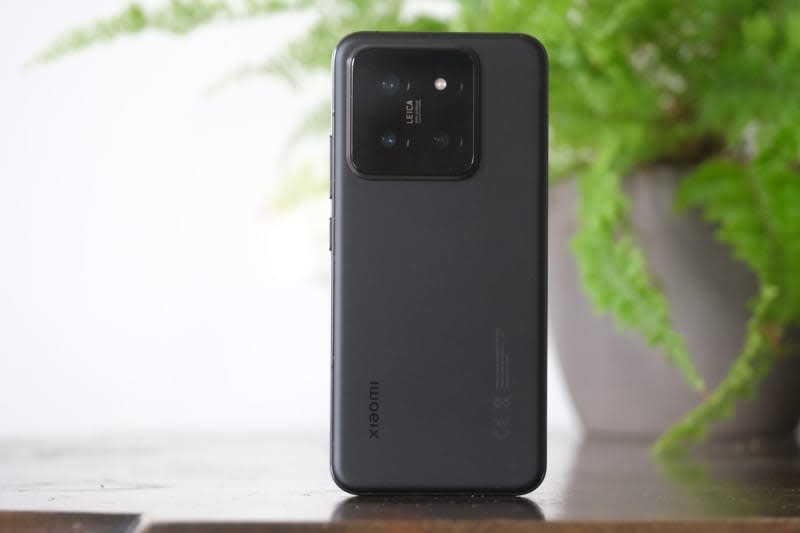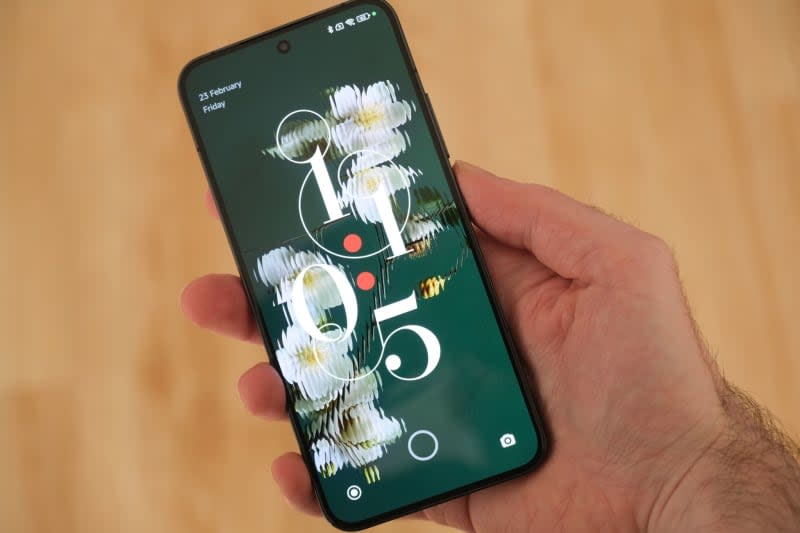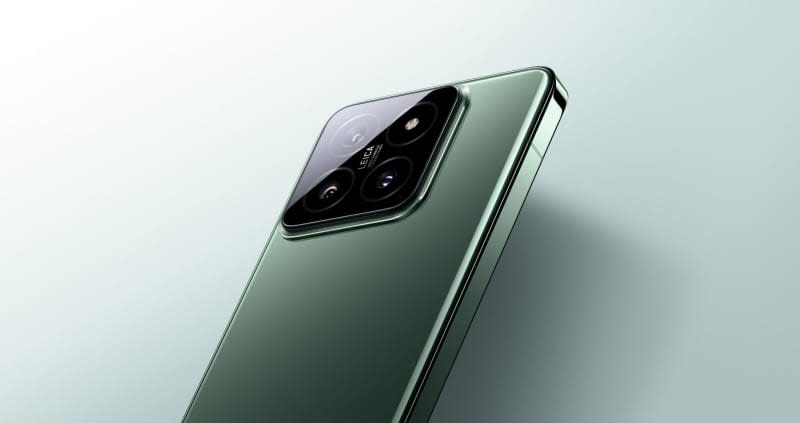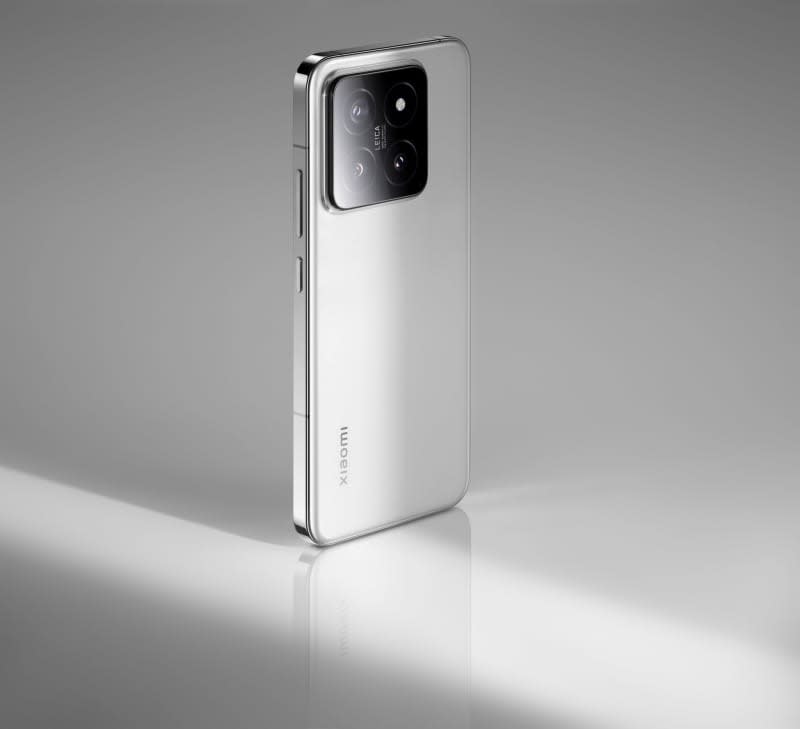Xiaomi 14 review: The closest thing to an iPhone on Android?
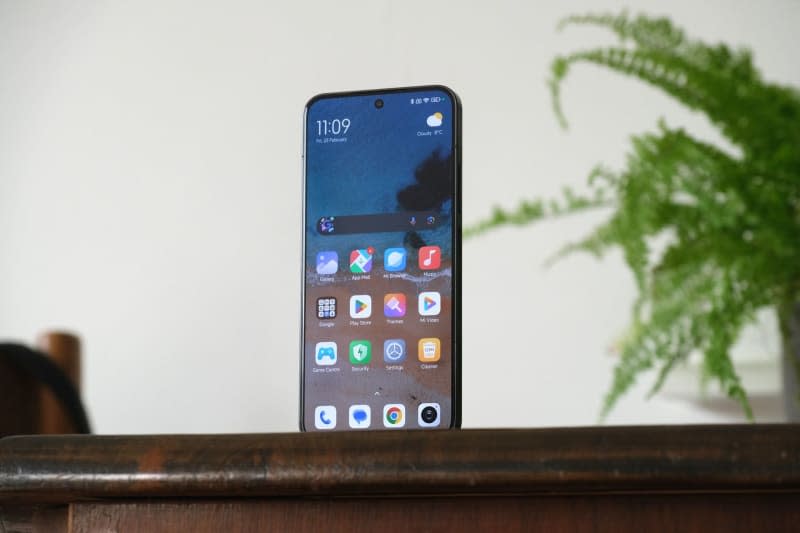
Taking your first few swipes around the new Xiaomi 14, you'd be forgiven for thinking it's an iPhone 15.
There's a flat-edged screen wrapped in an aluminium frame - just like on an iPhone. There are new customizable lock screens designed around the always-on display - just like on an iPhone.
Swipe down and you'll see a so-called Control Center giving you options for key functions like Bluetooth, torch and now also a media playback tile - just like on an iPhone.
One tap on a photo and the Gallery app will automatically cut out a person or pet and let you paste them into a chat app - just like on an iPhone.
Xiaomi is also borrowing from Apple's signature Dynamic Island feature with new pop-up notifications that appear in black around the selfie camera.
Call them stolen, borrowed or heavily inspired, many of Xiaomi's latest features are aimed at reducing the iPhone envy felt by some Android users.
And yet the real benefits of this phone are in the hardware.
A 'Pro' phone in all but name
This year, Xiaomi has packed what is essentially a "Pro" smartphone camera into a standard phone. Google and Apple ask users to pay more for better hardware like a zoom lens, more storage or a bigger screen and battery.
But Xiaomi is no longer offering a "Pro" version of the Xiaomi 14 outside of China. Instead, the standard version is taking its place - and it has both the hardware and the pricetag to match.
The Chinese manufacturer has made quite a few updates to last year's Xiaomi 13 without raising the price. The headline update is the addition of three 50-MP camera lenses used in last year's Pro model (more on that later).
Storage space has doubled (now starting at 256 GB), charging is faster (90W instead of 67W) and battery size has been slightly increased to 4,610 mAh. The new 6.3-inch LTPO OLED screen is sharper thanks to a higher pixel density (1200x2670, up from 1080x2400).
If we're nitpicking, the selfie camera's cutout is relatively large for a flagship Android phone, as are the bezels around the edges of the screen. Yet both are still smaller than on the iPhone 15. The fingerprint sensor is placed oddly low, requiring some thumb stretching.
Beyond that, few flagship rivals can offer much better than the Xiaomi 14's hardware: the latest Snapdragon 8 Gen 3 chip, a screen with 120 Hz refresh rate for smooth swiping, fast UFS 4.0 storage and an IP68 rating against water and dust.
So if the Xiaomi 14 can match the key hardware of rivals, then where does it stand out? The biggest difference is in the battery.
The 14 recharges with three times as many watts as rival flagships from Samsung, Google and Apple. Xiaomi claims that the 14 can get from 0 to 100% in 31 minutes - about the time Samsung's S24 takes to get to 50%.
The Xiaomi 14 also offers wireless charging at 50W - faster than many rival flagships can achieve with a cable. The LPTO OLED screen also stands out with an eye-searing maximum brightness of 3,000 nits, meaning you can easily use this phone in direct sunlight.
Three camera lenses, but not much AI
This year's Xiaomi essentially adopts the camera lenses of last year's pricier Pro model, adding three 50 MP lenses - a main shooter backed up by ultrawide and 3X zoom lenses.
The camera stands up to recent major flagships - albeit perhaps not when it comes to the use of artificial intelligence.
AI has been a buzzword for smartphone manufacturers this year, and both Samsung and Apple have been heavily marketing their AI-powered cameras.
Xiaomi has long offered some basic AI photo editing features like erasing people and objects, but these remains rather basic. Unlike on Samsung's latest phones, you can't tap on a person or object in a photo and move them to somewhere else in the photo. Erasing unwanted objects or people still tends to leave ugly smears behind.
Xiaomi says generative AI features are coming, and that one future feature will let users create AI-generated portrait background from prompts. Live translation like on Samsung and Google phones is also promised. But there's no certainty about when these might arrive.
Xiaomi appears to be focussing more on a version of Android that works well with its ecosystem of products. HyperOS - the successor of MiUI - is set to play nice with Xiaomi's first ever car, the Porsche look-a-like SU7, set to launch in China later in 2024.
Pre-installed "bloatware" remains a problem on HyperOS, and most users will find themselves sighing at the sight of AliExpress and Booking.com and muting notifications trying to get you to use Xiaomi's imitations of apps like YouTube and TikTok.
On the plus side, Xiaomi says it's new streamlined version of Android cuts the size of the operating system down to 8GB, from as much as 15GB in previous versions, leaving more room for the user's apps, photos and videos.
Xiaomi is somewhat disappointing when it comes to long-term software updates, and is offering only four years of Android updates and five years of security updates - well behind the seven years Google and Samsung are promising for their flagships.
Why buy a Xiaomi?
Where the Xiaomi stands out from Samsung, Google and Apple is with its faster charging, and the included 90W charger could tip the scales for some. The brighter screen and Apple-like software features are a bonus.
You will find smaller and cheaper high-end alternatives in Samsung's Galaxy S24, Apple's iPhone 15 and Google's Pixel 8, currently costing between €800 and €950.
However anyone who enjoys taking photos will find themselves missing the zoom lens on the standard iPhone 15 and Pixel 8.
If you like the design of the iPhone and want a decent camera zoom, then the Xiaomi 14 is a good place to start. Overall, it 14 offers several features that might be kept exclusive for the "Pro" version of other phones. However it does have Pro-like prices at launch.
This year's Xiaomi costs €1,000 in Europe, less than Google's Pixel 8 Pro, but more than Samsung's smaller-sized S24. Buyers should note: The online prices for last year's Xiaomi 13 dropped by as much as 25% in the weeks after launch.

